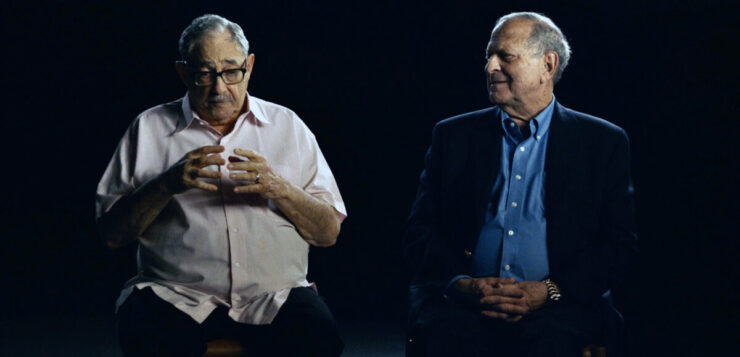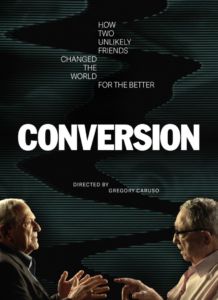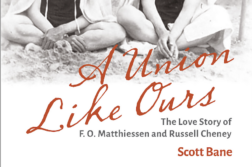Conversion
Gregory Caruso, Dir.
Bristol Pictures (2022)
I wish I could have seen Conversion in 1994. That was the year I voluntarily enrolled in a “pray-the-gay-away” conversion bootcamp. “Freedom At Last” was one of many in a network of Christian ministries operating under an umbrella organization called Exodus International. The founders of Exodus eventually “saw the light,” disbanded the network, and renounced conversion therapy; but for many, the damage was already done. Today, despite a major paradigm shift in public attitudes toward homosexuality and the criminalization of Exodus-type ministries in many states, conversion therapy stubbornly persists. This is one reason the documentary film Conversion is important.
Narrated by Zachary Quinto, Conversion is the story of Gerald Davison’s conversion from a behavioral therapist who was convinced he could turn gay men straight to a behavioral therapist who renounced everything he believed for years. The film opens with an admission: “Everything I had been doing was wrong.” We then learn a bit about Davison’s upbringing and his education at Harvard and Stanford before becoming “one of the six cardinal bishops of behavioral therapy” and a key figure in shaping medical and public attitudes toward homosexuality in the 1970s.
During his university years, when psychoanalysis was all the rage, Davison doubted its efficacy. Instead of excavating the subconscious and the past for the root causes of patients’ psychoses, Davidson much preferred Cognitive Behavioral Therapy, then a new field, emerging just after WWII. As he began to “treat” gay men, he rejected the common approach at the time— aversion therapy—which included “icepick lobotomies,” electroshock treatment, genital mutilation, hormonal injections, and the use of psychedelic drugs. Realizing these techniques were not only ineffective but also cruel, Davison championed what he called “Playboy Therapy,” essentially heterosexual stimulus without punishment, as opposed to homoerotic stimuli with punishment.
Davison promoted “Playboy Therapy” aggressively, publishing articles and even making a short film about it. Davison’s approach caught the attention of Charles Silverstein, another clinical psychologist, who was gay. Frustrated that Davison was missing a larger point, Silverstein invited Davison to a symposium he organized at the 1972 Association for Behavioral and Cognitive Therapies (ABCT) convention. At the symposium, Silverstein argued that Davison’s new treatment was only propagating the status quo. Davison was angry at first because his motives, at least in his own mind, were pure: “I didn’t think homosexuality was an illness, nor a perversion. But I thought they were making a voluntary decision, and I saw it as my duty to help them through it,” Quinto narrates.
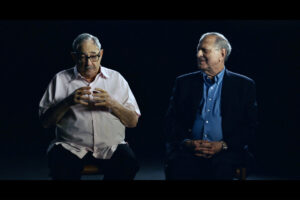
But it touched a nerve, and began a dialogue. As the film expertly illustrates, Silverstein eventually convinced Davison to abandon conversion therapy altogether. To paraphrase, the crux of Silverstein’s argument was that people seeking conversion therapy do not do it voluntarily; rather, they do it because they feel guilt and shame and loneliness, which are imposed on them by societal mores. Davison’s epiphany led him to conclude that conversion therapy should not be offered, even if clients requested it. His mantra became, “The question is not can we turn gay men straight, but rather, should we?”
The attitude toward queerness at the time was reinforced by the fact the American Psychiatric Association (APA) had officially considered homosexuality a mental disorder since 1952, when the first Diagnostic and Statistical Manual of Mental Disorders (DSM) was published. The DSM described homosexuality as a “sexual deviation” and a “sociopathic personality disturbance.” The second edition, published in 1968, classified it as a “non-psychotic mental disorder.”
In a 1974 speech to the ABCT, a group to which he had been elected President in 1972, Davison sent shock waves through the medical establishment when he took a stand against “sexual reorientation treatment.” The APA’s vote in 1973 to remove homosexuality from the DSM was not without controversy. The film features archival footage of homophobic therapist Charles Socarides, whose son is gay, railing against its removal. While much of the struggle that led to the APA’s momentous vote was documented, some key figures were left out of those narratives. For example, neither Davison nor Silverstein are mentioned in the
In “Rise and Fall of the Medical Model,” (an article published by The G&LR’s1999 issue, again in 2012, and most recently in 2023), Vernon Rosario writes, “In the span of a century, the diagnosis of homosexuality had come full circle, from being “discovered” as a profound psychiatric illness to being a normal variation of human sexuality. This history serves as a powerful example of the social and political malleability of supposedly objective scientific knowledge.” Conversion not only paints a fuller picture of how the psychiatric community abandoned its dominant model of treatment, but it also serves as a compelling example of Rosarios’s assertion.
Davison’s conversion, and Silverstein’s role in it, are important details in the broader picture of how the APA reversed course. The film wisely resists the temptation to stray from its narrow scope in the history of conversion therapy more broadly. It does not explore some of the topic’s more well-known moments: the 1970 APA convention, for example, when activists infiltrated the convention and heckled presenters or the testimony of Dr. Anonymous, later revealed to be Dr. John Fryer, who testified wearing a mask and a voice scrambler at the 1972 APA. Nor is it sidetracked by other activists in the APA fight, such as Barbara Gittings, Frank Kameny, Ron Gold, and Rev. Magora Kennedy, among others. If these activists were banging on the APA’s gates from the outside, there were also members of the medical establishment attempting to affect change from within, chief among them Lawrence Hartmann, Evelyn Hooker, and Jack Drescher, along with Davison and Silverstein. How those two factions worked together is a fascinating story which is treated in 2020’s documentary, Cured.
Conversion is a straightforward documentary film that hearkens back to Changing Our Minds: The Story of Dr. Evelyn Hooker (1992) in that it is tightly focused on one therapist’s story. Along with Cured, Conversion helps re-center the declassification homosexuality as a mental disorder as a key component of the larger struggle for LGBTQ+ rights.
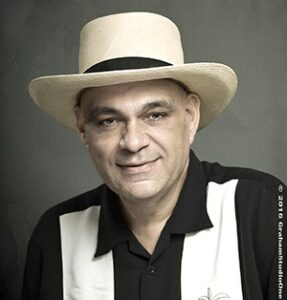 Frank Perez serves as Executive Director of the LGBT+ Archives Project of Louisiana. He has written several books on queer New Orleans and teaches part-time at Loyola University. You can learn more about him on his website.
Frank Perez serves as Executive Director of the LGBT+ Archives Project of Louisiana. He has written several books on queer New Orleans and teaches part-time at Loyola University. You can learn more about him on his website.


